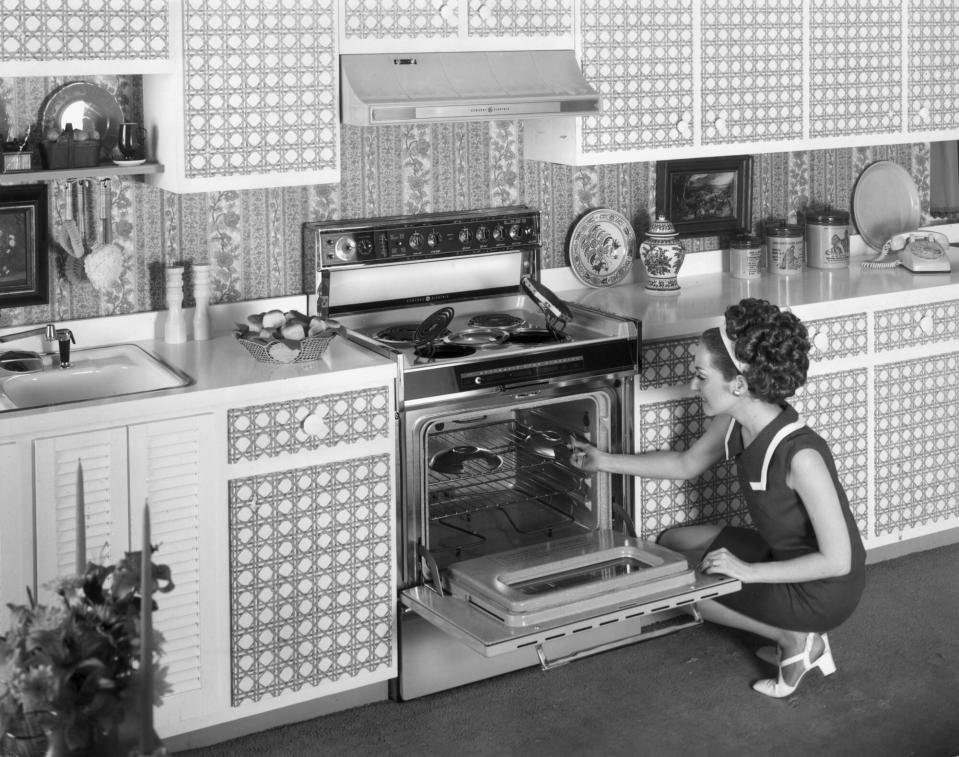Here's Why You May Not Want To Use Your Oven's Self-Cleaning Function
There are some chores that no one wants to do. Cleaning the oven is definitely one of them. Not only do 41% of Americans list cleaning the oven as their least favorite chore (right behind scrubbing the commode!) but that hatred is universal—it's also the UK's most hated chore. Since nearly everyone dislikes scrubbing down their ovens, it makes sense that people would want to buy ovens with self-cleaning modes where with one push of a button the oven does the hard work for you.
It sounds like a dream, but self-cleaning functions can be a bit of a nightmare. Here's why you may want to skip it.

Hulton Archive / Stringer / Getty Images
The way ovens clean themselves is by cranking up the heat to extremely high temperatures, according to LifeHacker, as in temperatures so high you didn't know your oven was capable of such a feat (read: over 800 degrees). The high heat turns any food scraps to ash, which are easier to clean up than stuck-on cherry cobbler filling or casserole overflows. Typically, during a self-cleaning cycle, all the heating elements in your oven are activated and, with the incredibly high temperatures blasting out of the oven, most models have a safety feature that locks the door for the duration of the cycle until the oven has sufficiently cooled. As the temperatures rise, be prepared for smoke, fumes, odors, and heat. Turning food to dust takes time, too, meaning your oven is out of commission for cooking and emitting heat for several hours. This is not a job for a hot summer day.
Once the door unlocks, you'll need to wait a few more hours for the oven to cool down enough to safely reach in and wipe down the inside, using a sponge or damp cloth to gather the ash. Just because it's self-cleaning doesn't mean it doesn't require a little elbow grease!
There are a few other concerns with self-cleaning cycles. Besides the heat, there is real potential for smoke and fumes, including carbon monoxide and carbon-based chemicals, like polycyclic aromatic hydrocarbons (PAHs) and heterocyclic amines (HCAs), to be produced. (More on that here.)
Plus, it's not a fail-safe operation. One appliance repair company claims that every fourth or fifth call they get is related to a problem that started with the self-cleaning function. Those high temperatures can damage the oven, including shorting a thermal fuse or burning out a heating element, according to BobVila.com.
If your oven needs a scrub, it may be worth following our guide on how to clean an oven and saving the self-cleaning option for special occasions.

